Structural decoding of netrin-4 reveals a regulatory function towards mature basement membranes
- PMID: 27901020
- PMCID: PMC5141367
- DOI: 10.1038/ncomms13515
Structural decoding of netrin-4 reveals a regulatory function towards mature basement membranes
Abstract
Netrins, a family of laminin-related molecules, have been proposed to act as guidance cues either during nervous system development or the establishment of the vascular system. This was clearly demonstrated for netrin-1 via its interaction with the receptors DCC and UNC5s. However, mainly based on shared homologies with netrin-1, netrin-4 was also proposed to play a role in neuronal outgrowth and developmental/pathological angiogenesis via interactions with netrin-1 receptors. Here, we present the high-resolution structure of netrin-4, which shows unique features in comparison with netrin-1, and show that it does not bind directly to any of the known netrin-1 receptors. We show that netrin-4 disrupts laminin networks and basement membranes (BMs) through high-affinity binding to the laminin γ1 chain. We hypothesize that this laminin-related function is essential for the previously described effects on axon growth promotion and angiogenesis. Our study unveils netrin-4 as a non-enzymatic extracellular matrix protein actively disrupting pre-existing BMs.
Figures
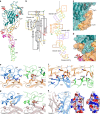
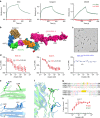
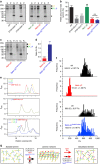


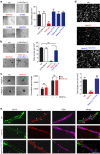

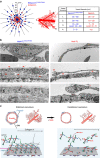
Similar articles
-
Binding of netrin-4 to laminin short arms regulates basement membrane assembly.J Biol Chem. 2007 Aug 17;282(33):23750-8. doi: 10.1074/jbc.M703137200. Epub 2007 Jun 22. J Biol Chem. 2007. PMID: 17588941
-
The expression and function of netrin-4 in murine ocular tissues.Exp Eye Res. 2012 Mar;96(1):24-35. doi: 10.1016/j.exer.2012.01.007. Epub 2012 Jan 20. Exp Eye Res. 2012. PMID: 22281059 Free PMC article.
-
Netrin-1-mediated axon outgrowth and cAMP production requires interaction with adenosine A2b receptor.Nature. 2000 Oct 12;407(6805):747-50. doi: 10.1038/35037600. Nature. 2000. PMID: 11048721
-
Netrin-4: Focus on Its Role in Axon Guidance, Tissue Stability, Angiogenesis and Tumors.Cell Mol Neurobiol. 2023 Jul;43(5):1663-1683. doi: 10.1007/s10571-022-01279-4. Epub 2022 Nov 9. Cell Mol Neurobiol. 2023. PMID: 36350538 Free PMC article. Review.
-
Assembly and tissue functions of early embryonic laminins and netrins.Curr Opin Cell Biol. 2004 Oct;16(5):572-9. doi: 10.1016/j.ceb.2004.07.013. Curr Opin Cell Biol. 2004. PMID: 15363809 Review.
Cited by
-
Zinc-finger protein CNBP alters the 3-D structure of lncRNA Braveheart in solution.Nat Commun. 2020 Jan 9;11(1):148. doi: 10.1038/s41467-019-13942-4. Nat Commun. 2020. PMID: 31919376 Free PMC article.
-
RNA‑binding protein quaking 5 inhibits the progression of non‑small cell lung cancer by upregulating netrin‑4 expression.Oncol Rep. 2023 Nov;50(5):204. doi: 10.3892/or.2023.8641. Epub 2023 Oct 6. Oncol Rep. 2023. PMID: 37800632 Free PMC article.
-
Hepatic Expression of NTN4 and Its Receptors in Patients with Hepatocellular Carcinoma.Asian Pac J Cancer Prev. 2023 Dec 1;24(12):4285-4292. doi: 10.31557/APJCP.2023.24.12.4285. Asian Pac J Cancer Prev. 2023. PMID: 38156865 Free PMC article.
-
Organization of the laminin polymer node.Matrix Biol. 2021 Apr;98:49-63. doi: 10.1016/j.matbio.2021.05.004. Epub 2021 May 21. Matrix Biol. 2021. PMID: 34029691 Free PMC article.
-
Nanoscale Structure Determination of Murray Valley Encephalitis and Powassan Virus Non-Coding RNAs.Viruses. 2020 Feb 8;12(2):190. doi: 10.3390/v12020190. Viruses. 2020. PMID: 32046304 Free PMC article.
References
-
- Ishii N., Wadsworth W. G., Stern B. D., Culotti J. G. & Hedgecock E. M. UNC-6, a laminin-related protein, guides cell and pioneer axon migrations in C. elegans. Neuron 9, 873–881 (1992). - PubMed
-
- Kennedy T. E., Serafini T., de la Torre J. R. & Tessier-Lavigne M. Netrins are diffusible chemotropic factors for commissural axons in the embryonic spinal cord. Cell 78, 425–435 (1994). - PubMed
-
- Nakashiba T., Nishimura S., Ikeda T. & Itohara S. Complementary expression and neurite outgrowth activity of netrin-G subfamily members. Mech. Dev. 111, 47–60 (2002). - PubMed
Publication types
MeSH terms
Substances
Grants and funding
LinkOut - more resources
Full Text Sources
Other Literature Sources
Molecular Biology Databases

